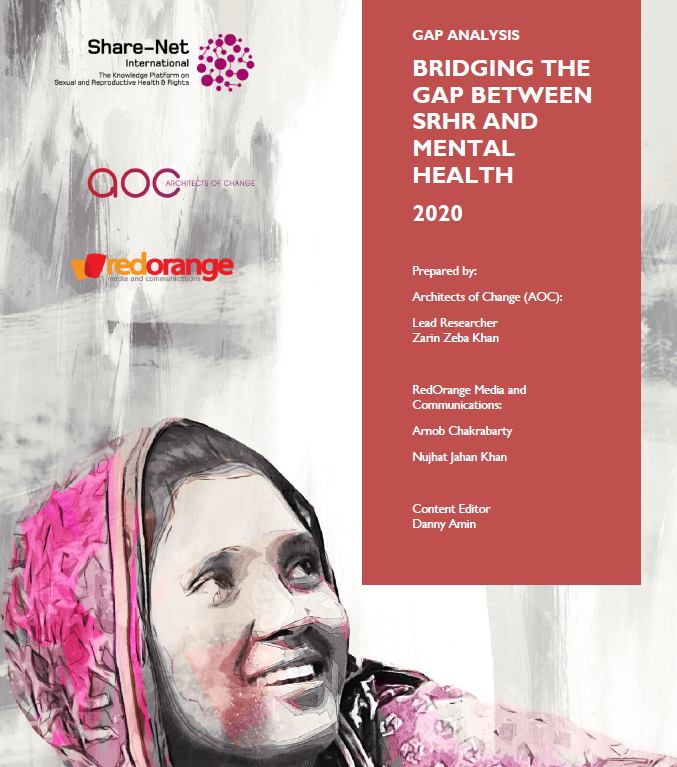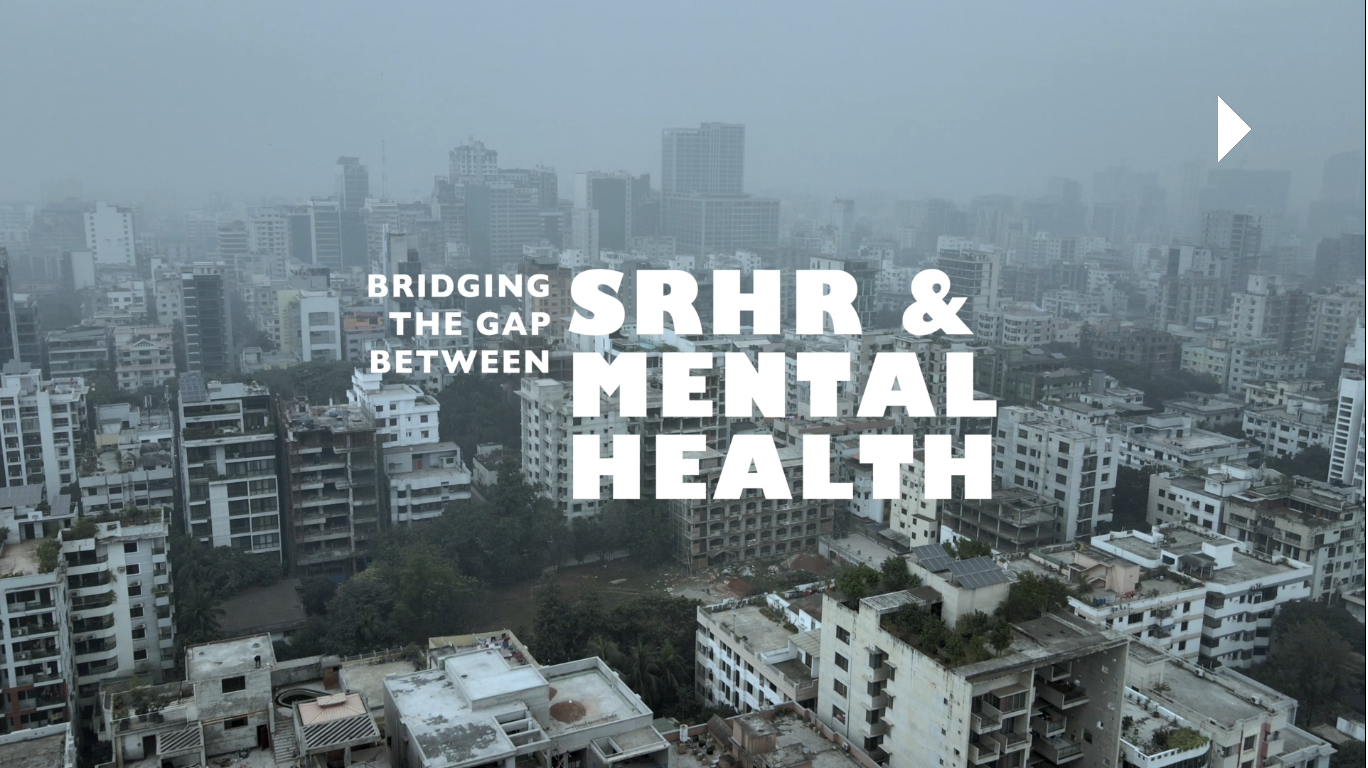Research Paper: Bridging the Gap Between Mental Health and SRHR
A growing number of people are suffering from mental health issues around us. As an unhealthy mental state is not visible to bare eyes, it is often ignored or dealt with without being addressed. A significant chunk of mental health problems are caused by experiences related to Sexual and Reproductive Health and Rights (SRHR), namely sexual abuse, child sexual abuse, gender based violence, lack of bodily autonomy, infertility, postpartum impacts and so on.
To analyse the connection between Sexual and Reproductive Health and Rights (SRHR) and mental health, a research titled “Bridging the Gap Between Mental Health and SRHR” was conducted by lead researcher Ms. Zarin Zeba Khan from Architects of Change (AOC) in collaboration with RedOrange Media and Communications Ltd. This research was a project of Share-Net International Small Grants 2020.
The study aims to identify and bridge the knowledge gap between mental health and SRHR in policies and practice. It covers the historical journey towards establishing SRHR in the global human development agenda and examines the progress of SRHR and mental health in Bangladesh. The literature review was done by analyzing published literature and news articles and reviewing the gaps in the current policies, laws, strategies and agreements in Bangladesh. Expert interviews were conducted to translate their tacit knowledge to explicit knowledge. To recognize that SRHR and mental health are linked, it requires innovative approaches to reach out to everyone by introducing a model of service delivery and addressing sensitive issues. Furthermore, the new approach can include the grassroots stakeholders to bring their local knowledge to respond and meet the SRHR and mental health needs of the local community. Moreover, the government should allocate their budget to ensure stigma-free, discrimination-free and quality SRHR and mental health services.
Download: Gap Analysis- Bridging the Gap Between Mental Health and SRHR
Check out the video documentary of this research clicking the image below:





